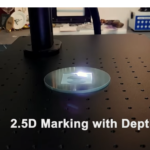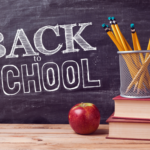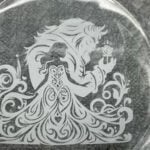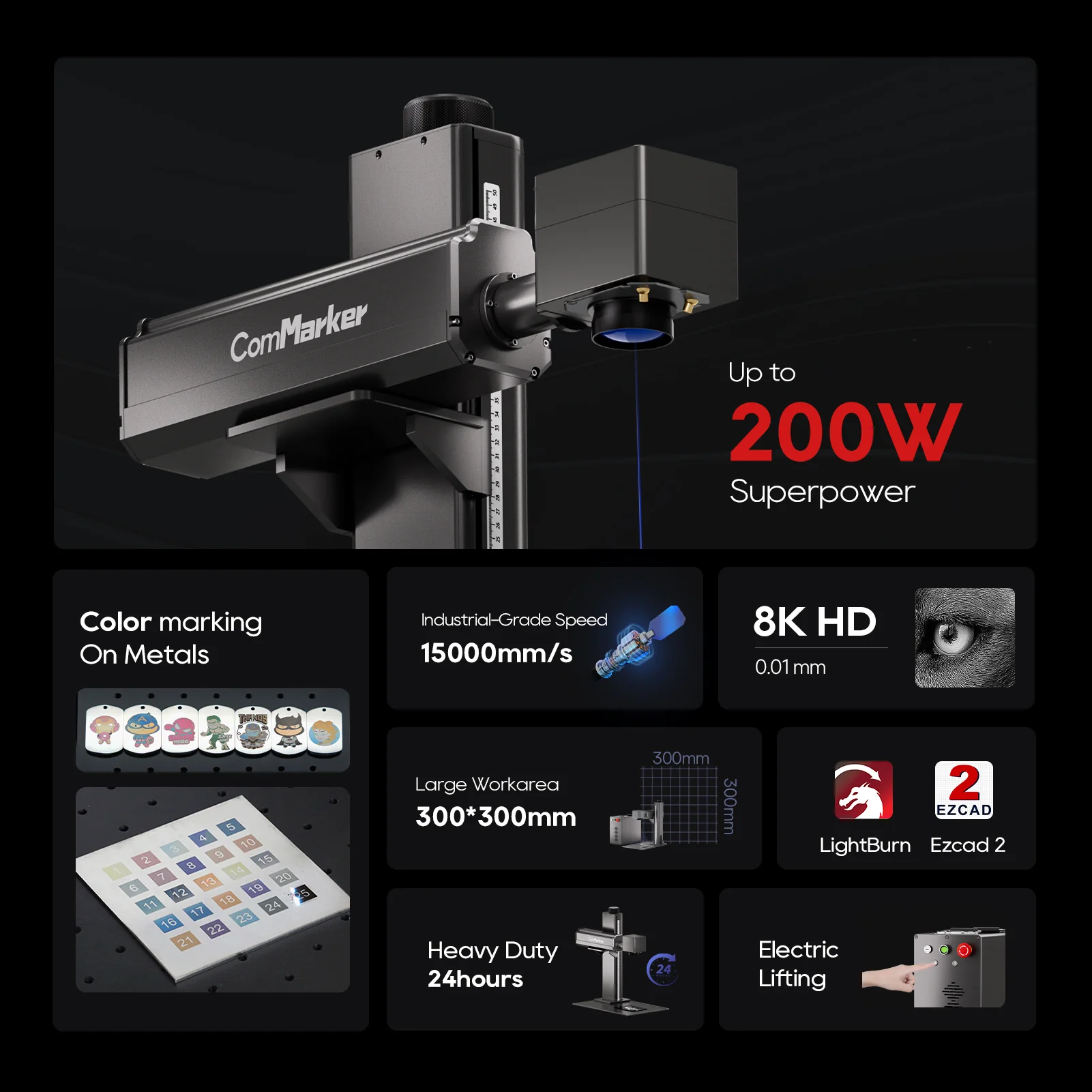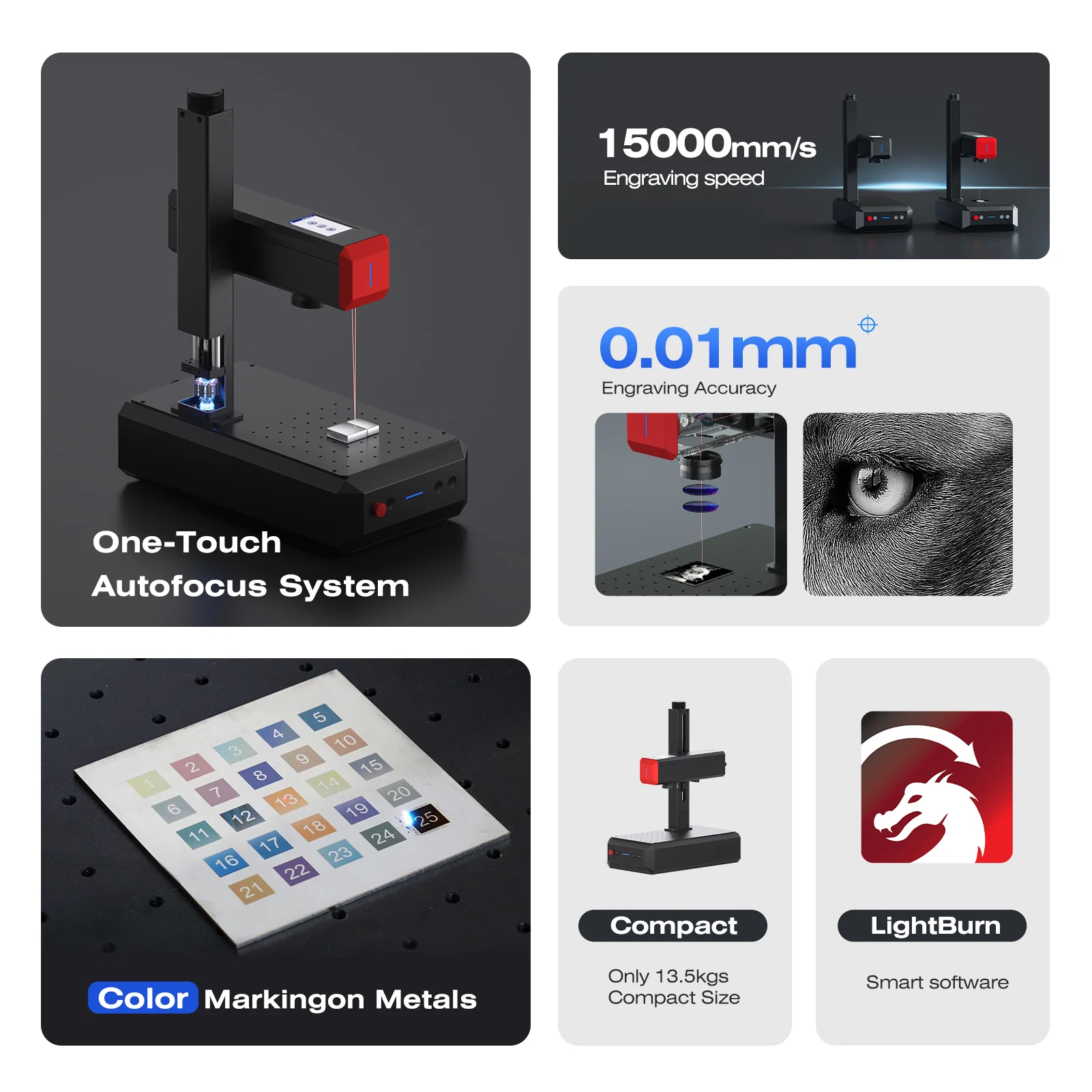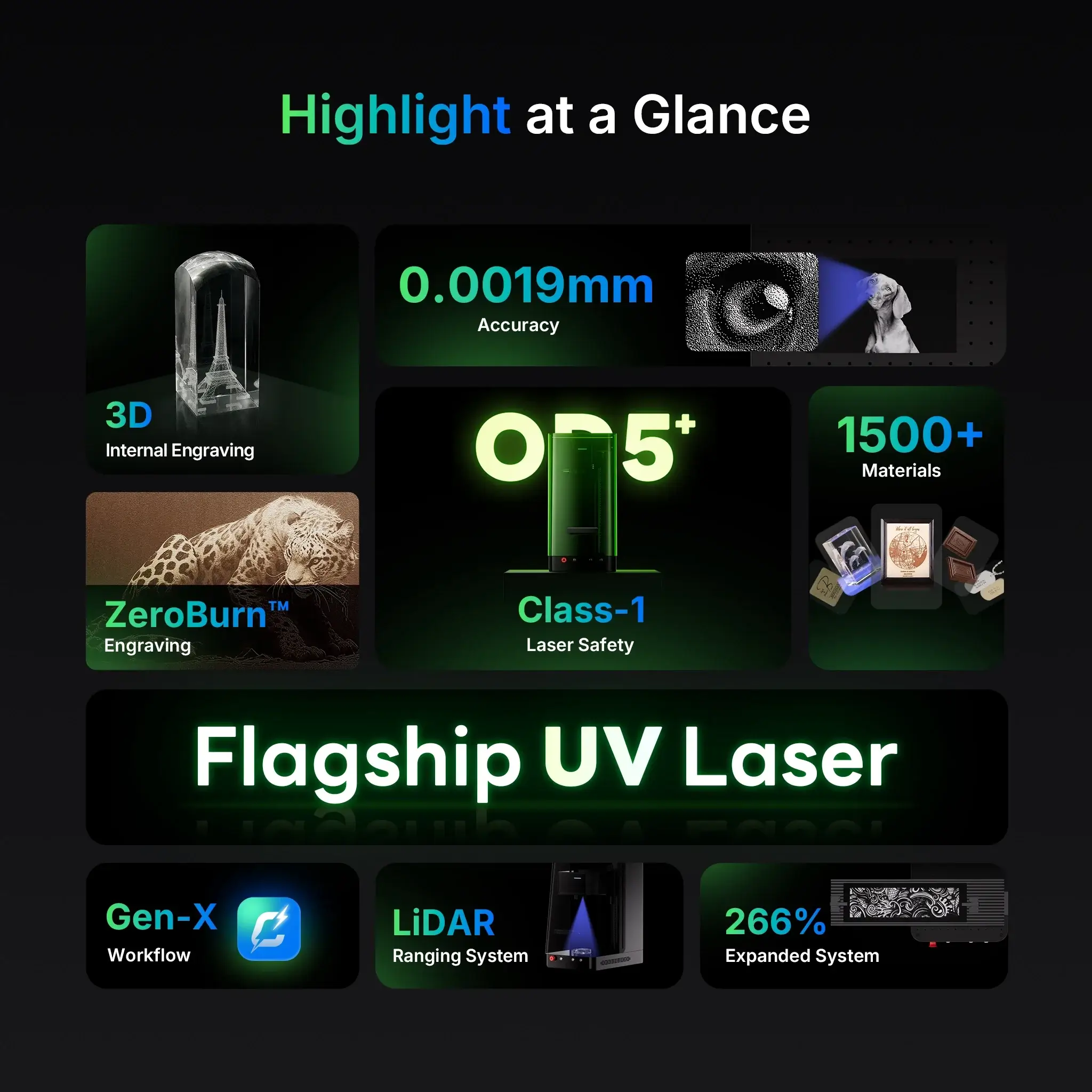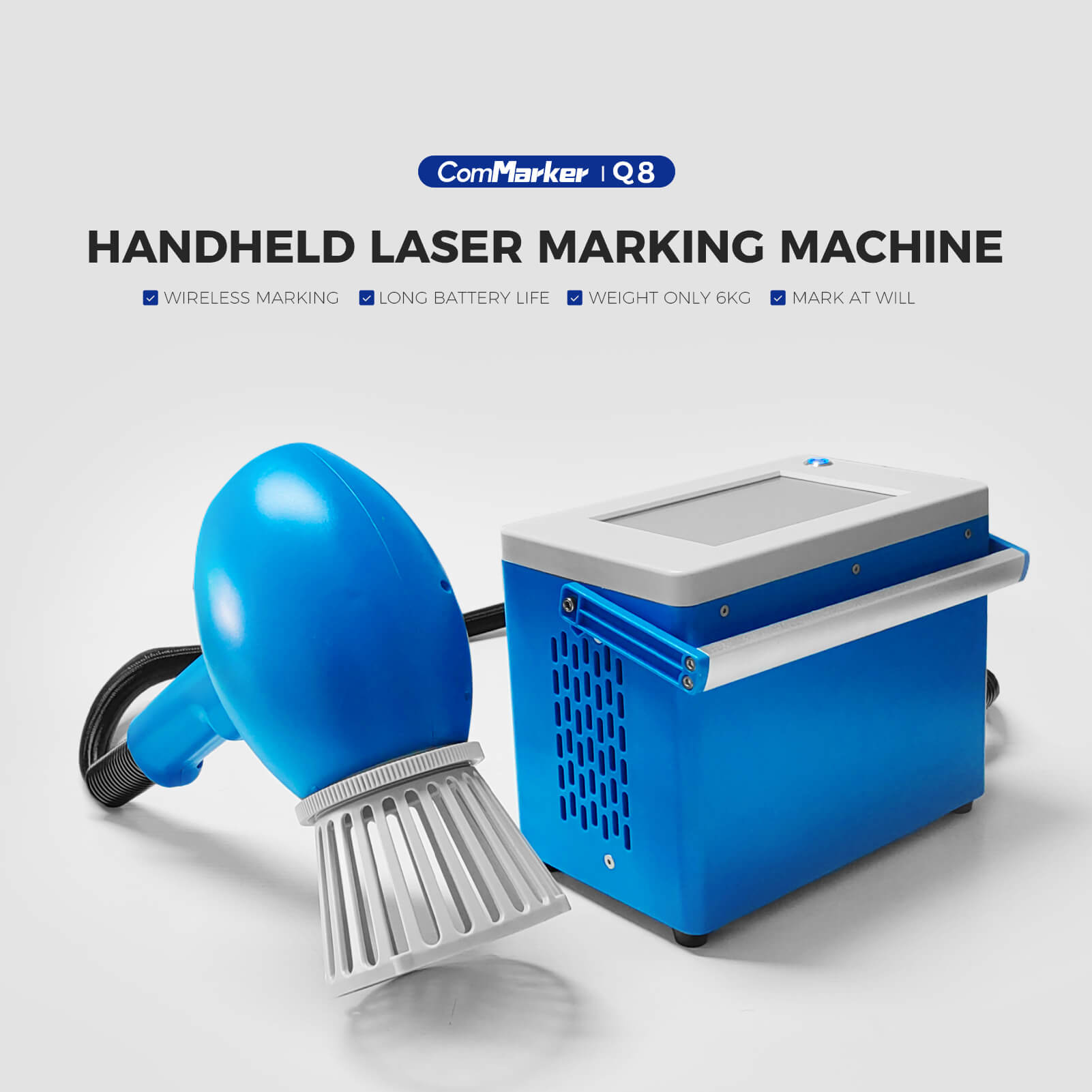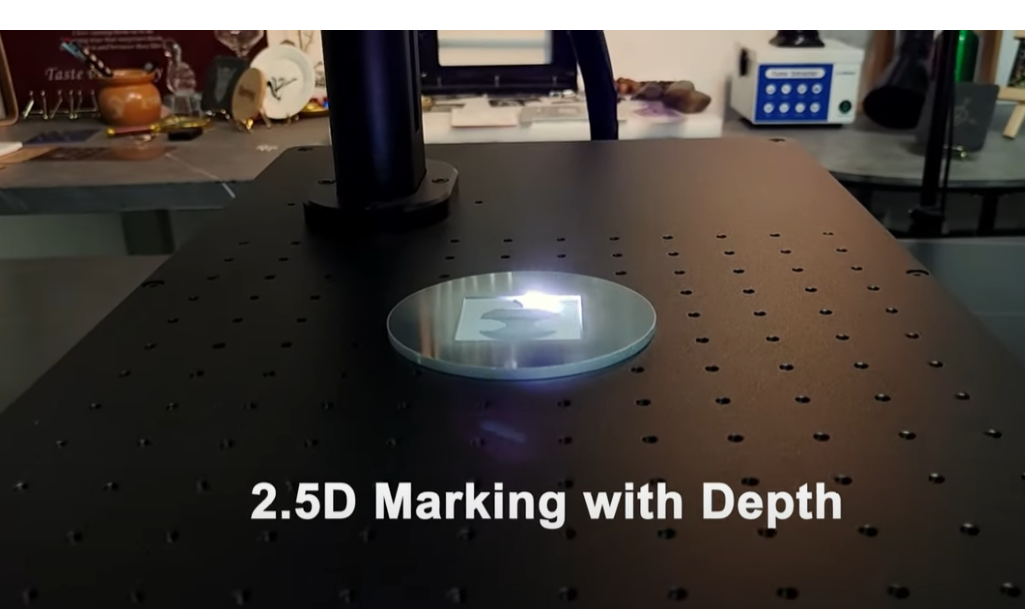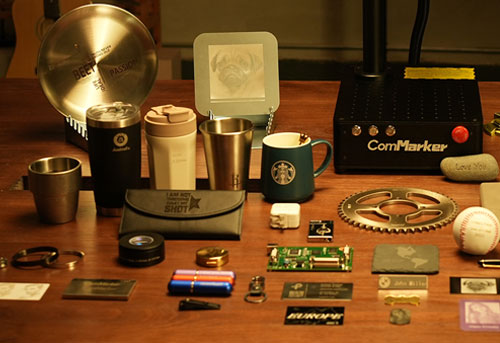When you’re investing in your first or next laser machine, deciding between a 5W UV laser engraver and a 20W fiber laser engraver can feel like comparing apples to oranges. Both technologies are incredibly capable—but they shine in very different ways. Whether you’re customizing glassware, marking metals, or launching a small laser business, the choice you make can dramatically impact your workflow, materials, and results.
In this guide, we’ll break down the differences between UV and fiber laser engravers, with a special focus on 5W UV vs. 20W fiber systems. We’ll help you match the right tool to your projects—so you don’t overbuy or underperform.

Understanding the Basics: UV vs. Fiber
Before diving into the wattage, let’s clear up the core technology.
- UV Laser Engravers (355 nm): These use short-wavelength ultraviolet light that interacts with materials on a photochemical level. That means less heat, which is great for delicate surfaces.
- Fiber Laser Engravers (1064 nm): These operate using a solid-state laser source, producing powerful beams that engrave by thermal interaction. They’re ideal for metals and other high-density materials.
👉 In short: UV = cool and precise. Fiber = hot and strong.

Why Power Ratings Matter — But Not Everything
A 20W fiber laser engraver is not “four times better” than a 5W UV. Wattage impacts speed and depth, but the type of laser determines what materials you’re working with and how clean your results are.
Let’s compare:
| Feature | 5W UV Laser | 20W Fiber Laser Engraver |
|---|---|---|
| Best For | Plastics, glass, acrylic, leather, PCBs | Metals (steel, brass, aluminum), anodized materials |
| Engraving Detail | Extremely fine (spot size ~0.002mm) | Sharp on metal, but larger spot size (~0.01mm) |
| Thermal Damage | Very low – ideal for delicate surfaces | Moderate to high – can discolor or warp soft materials |
| Color Engraving | Not applicable | Optional (with MOPA model upgrades) |
| Cutting Capability | Very limited | Can engrave deep or cut thin metals |
| Speed | Moderate | Fast for metals |

When to Choose a 5W UV Laser Engraver
You should go UV if:
- You engrave glass, acrylic, or clear plastics (which fiber lasers can’t touch).
- You want pinpoint precision for micro-text, QR codes, logos, or electronics.
- You run a business making custom gifts, jewelry, tumblers, or leather products.
- You care about no burn marks and perfect edges on sensitive items.
✅ Recommended: ComMarker Omni 1 UV Laser Engraver
With 16K resolution, ZeroBurn™ tech, and compatibility with LightBurn, the Omni 1 is a small-format powerhouse perfect for detailed, multi-material work.

When to Choose a 20W Fiber Laser Engraver
You should go fiber if:
- You engrave metal daily (e.g., stainless steel tags, tools, weapons, or serialized parts).
- You need faster production and deeper engraving than a UV laser offers.
- You want a machine that works with anodized aluminum, brass, copper, and more.
- You need a rugged, fast setup for industrial or business use.
✅ Recommended: ComMarker B6 Fiber Laser Engraver (20W)
With 0.01mm precision and ultra-portability, the B6 delivers professional-grade metal engraving in a lightweight, shop-friendly package.

Use Case Scenarios
Here’s what a few typical users might choose:
- Maker doing etched wine glasses and leather coasters? → Omni 1 UV
- Gunsmith marking steel slides or AR lowers? → B6 Fiber
- Small biz customizing tumblers, tags, and wood boxes? → Consider Omni 1 for precision or B6 for speed.
- Engraving circuit boards or plastic enclosures? → UV is your best friend.

What About Maintenance and Ease of Use?
- UV Lasers: Typically more compact, lighter, and quieter. They need ventilation for materials like acrylic or plastic.
- Fiber Lasers: Built tougher for heavy-duty use. They can be louder, and often need more robust electrical and cooling setups.
💡 Both the Omni 1 and B6 come with intuitive software options like LightBurn and EZCAD, and both support rotary attachments for cylindrical engraving.

Troubleshooting Common Issues
For UV Laser Engraving:
- If results are faint on glass, double-check focus height and reduce speed.
- Ghosting or foggy lines? Improve airflow and add painter’s tape to glass.
For Fiber Laser Engraving:
- Uneven depth on metal? Recalibrate Z-height and test hatch spacing.
- Discoloration or burn marks? Reduce power or increase frequency.
How to Choose Between a 5W UV and a 20W Fiber Laser Engraver
When you’re investing in your first or next laser…
Choose Smart, Not Just Strong
Don’t let wattage alone drive your purchase. A 20W fiber laser engraver is a beast with metal—but for mixed materials, clean finishes, or ultra-fine work, a 5W UV laser may outperform it.
🔥 Want the best of both worlds? Start with the Omni 1 for intricate work, and scale up to the Titan 1 or B6 for serious metal production.

